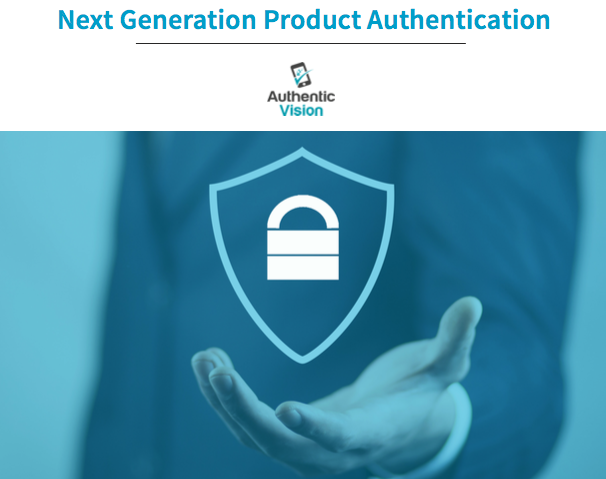Beyond Labelling: 5 Techniques for Success in Anti Counterfeiting Programs

At Authentic Vision, we are strong supporters of product security labels to fight the problem of fake goods. But, we know it takes more than just a hologram on product packaging to deliver real anti counterfeiting benefits.
We’ve developed a next gen system of security labels using copy-proof fingerprints and online monitoring to move well beyond holograms. During the past six years, we’ve also worked with clients globally to implement our system and found that when awareness and education efforts are paired with deployment of today’s advanced security labels, brand protection programs are even more successful.
Specifically, we’ve seen five common awareness and education elements in the best anti counterfeiting programs created by brand owners. If you’re planning a program of your own, consider incorporating these elements to complement use of a next gen security label and monitoring system.
- Engage up and down your supply chain. Counterfeiting can impact your goods at any point from materials supply to distribution. Suppliers, distributors and retailers must know you are taking counterfeiting seriously by monitoring for issues and applying consequences when problems are found. Regular updates and information sharing about the latest in counterfeiters’ tactics and your own program can help keep the focus on brand protection efforts.
- Enlist retailers in the fight. Retailers occupy a special place in a company’s system of partners, and they can be noticeably impacted when fake goods are discovered. Research has shown that consumers will take action against retailers when they hear of a problem with fake goods. In the automotive aftermarket parts sector, 76 percent of U.S. car owners in our recent survey said they will share information with family and friends about a brand or retailer that has a problem with fake goods to make sure they protect themselves and their cars. A similar study found that 76 percent of U.K. baby food buyers were unlikely or very unlikely to buy from a company accused of counterfeiting or having counterfeit stock. We would expect similar results in other sectors.
We’ve seen a number of successful programs through which brand owners engage retailers in anti counterfeiting efforts by providing materials and promotions that educate buyers about the risks of fake goods along with the ease of use of security labels. These consumer campaigns have included point of sale displays and signage, as well as in-store education efforts for sales teams. Some programs have also used brand owner advertising and email campaigns.
- Make product verification routine and value added. Mobile apps that scan security labels allow a person to authenticate a product without any special training or equipment. This type of easy-to-use technology can help normalize product validation as part of the buying process. Once in place, apps can also deliver product information, education and promotions that give consumers extra value. Making scanning a regular step in purchases requires education and reinforcement about ease of use and the benefits. In-store and online demos along with flyers and other promotions can introduce and reinforce these concepts with buyers.
- Equip your team. Campaigns using in store displays, advertising and email can raise awareness, but they are no substitute for person-to-person contact. The most successful brand protection programs we have seen from clients also train brand owners’ teams on how to educate retail sales staff and buyers. Representatives from brand owners need to know the facts about the risks of fake goods, how to demonstrate security label verification ease of use, and techniques for explaining benefits to retailers and buyers. As part of these programs, brand owners’ teams are typically provided with talking points, handout materials, and product packaging samples. Once in place, these educated and trained advocates are a huge resource to further a manufacturer’s or brand owner’s anti counterfeiting efforts.
- Become an activist for the importance of anti counterfeiting efforts. The widespread existence of fake goods means that counterfeits are an issue beyond just your brand and products. By spreading the word about the impact of the problem for your sector, you are helping protect consumers, jobs and your area’s economic well being, as well as your own revenue stream. Brand owners can raise their profiles and build stakeholder trust by taking a public leadership role in the fight against fakes. These efforts typically include sharing information and insights about the impact of fake goods in media interviews, social media and via your own website.
This advocacy can be driven even by passing along information from government and non-profit organizations that have campaigns to fight counterfeits. The International Trademark Association’s Unreal campaign is one compelling example because of its use of real world video stories to convey the impact of counterfeiting.
Brand protection requires constant vigilance and ongoing adaptation as counterfeiters change tactics and increase in sophistication. A next gen security label, easy-to-use scanning app and online monitoring system are the critical foundation elements for any program. Additionally, the most successful programs go beyond with education and awareness efforts. Incorporating these five approaches into your overall anti counterfeiting program can take it to the next level for even more protection of your consumers, brand and community.

